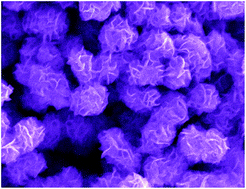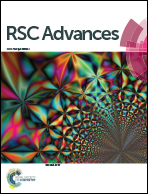Understanding the formation mechanism and the 3D structure of Mo(SxSe1−x)2 nanoflowers†
Abstract
Nanoflowers of layered materials are promising building blocks for photocatalysis due to their unique morphology and exposed edges. Colloidal synthesis of MoS2, MoSe2 and their alloys was used to produce fine nanoflowers with tunable composition. The alloys follow Vegard's law, showing homogeneous composition. They exhibit fully tunable optical properties, where the exciton positions change with alloy composition. Samples annealed under vacuum retain their fine morphology and their composition, which closely follows the feed ratio. Time series analysis was used to investigate the formation mechanism. The results support a growth mechanism of fast-precipitating amorphous material, followed by crystallization of a few layers of small sheets, which curl and tangle around themselves. Electron tomography of the time series reveals a perforated structure without a dense core, supporting the suggested growth mechanism. These structures show multiple exposed edge sites, making them promising materials for applications such as photocatalysis.



 Please wait while we load your content...
Please wait while we load your content...